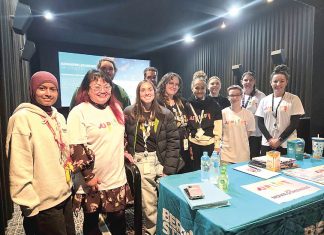This summer represents the highest risk period for blackouts in Victoria, a new report by the Australian Energy Market Operator says.
AEMO’s 2017 Electricity Statement of Opportunities found electricity “reserves have reduced to the extent there is a heightened risk of significant unserved energy (USE) over the next 10 years, compared with recent levels”.
USE, commonly referred to as blackouts, is the amount of energy that cannot be supplied to consumers because there is not enough generation capacity, demand side participation or network capability to meet demand.
Environment Victoria acting chief executive Nick Aberle said AEMO’s annual report should make people think about the coming challenges of the electricity market to come up with sensible solutions.
“What it shouldn’t make us do is press the panic button and have the federal government keep open an ancient power station,” he said.
This week Prime Minister Malcolm Turnbull raised the possibility of encouraging AGL, owner of Loy Yang A, to keep the 46-year-old Liddell coal plant in New South Wales open for at least five years beyond its slated closure in 2022, which the company rejected.
“If we had thought about this five years ago and said ‘lets prepare for it’… if we’d gotten serious about energy efficiency, invested in storage technology like batteries… right now we would say AGL closing is fine because we know we have enough renewable energy in the pipe to deal with that,” Mr Aberle said.
“That transition is happening and if we are level-headed about this it should be clear that we need to make sure we are building enough renewable energy to deal with the coming closures [of power stations].
Mr Aberle said AGL should be commended for its “transparency about closing down [Liddell] in 2022”.
He said options that can be “rolled out quickly” needed to be implemented to offset the forecasted blackouts throughout Victoria this summer.
“We know that battery capacity can be installed very quickly. We know that demand management opportunities exist, we’re not using those nearly as much as we should,” Mr Aberle said.
“Energy efficiency is a huge part of this. If we continue to build inefficient housing, we know it will consume a lot more.
Committee for Gippsland chief executive Mary Aldred said AEMO’s blackout forecast was a “really critical observation”.
“If you can’t ensure security of supply it can have disastrous consequences for families, supplies and businesses,” she said.
“We’ve got a lot of dairy farmers and food manufacturers in Gippsland.
“If you look at what happened in South Australia… they couldn’t refrigerate their food stock and a lot of their workforce were casual, so it’s not only harmful to business but they had to send a whole heap of casual staff home, so they don’t get paid.”
In the medium to long-term future, Ms Aldred said the Committee for Gippsland had “called for a discussion around low-emission coal-fired power stations”.
“But even if we get started tomorrow, we’re looking at five to 10 years before that will be constructed, so [there is] conversation around extending the life of existing power stations,” she said.
Ms Aldred said “targeted action” specifically in Victoria and South Australia “in pursuit of 1000 megawatts of strategic reserve program of command response to provide additional capacity” needed to be taken to offset the risk to security of supplies.











